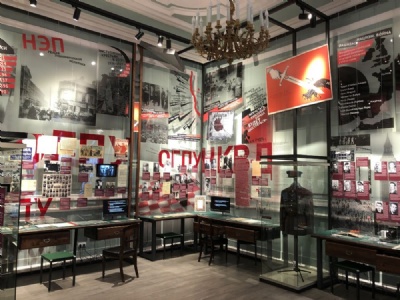Leningrad – Cheka HQ
In December 1917, the Bolshevik leader Vladimir Lenin appointed his loyal associate Felix Dzerzhinsky as the head of the political police. This police bore the name Cheka, whose task was to fight mercilessly and prevent all counter-revolutionary activity by all means. Counter-revolutionary activity means anything that was not in line with Lenin’s Bolshevism. The headquarters of Chekan and Dzerzhinsky were set up in a building near the Hermitage (Winter Palace) from where the pursuit of counter-revolutionary elements was planned and conducted. The Cheka and Dzerzhinsky came to make themselves known for their brutality against dissidents where summary murders and trials were common elements, often on arbitrary grounds. In March 1918, when Lenin moved the capital from St. Petersburg (Petrograd) to Moscow, Chekan and Dzerzhinsky also moved. In Moscow, they set up hesdquarters in the infamous Lubyanka.
Current status: Preserved with museum (2021).
Address: Admiralteisky prospekt 6, Sankt Petersburg.
Get there: Metro to Admiralteyskaya Station.
Follow up in books: Leggett, George: Cheka: Lenin’s Political Police (1986).




In 1922, the Cheka was dissolved and reorganized into the GPU, and after that, the NKVD and the KGB. Dzerzhinsky died in 1926. Dzerzhinsky is still a controversial figure in Russia, where some see him as a legitimate person and wish to exonerate him, while others see him as a criminal to be equated with the Nazi head of SS, Heinrich Himmler. In the mid-eighties, the former headquarters was renovated and in connection with this, Dzerzhinsky’s office was reconstructed, which is now part of the museum of the political police history in Russia.